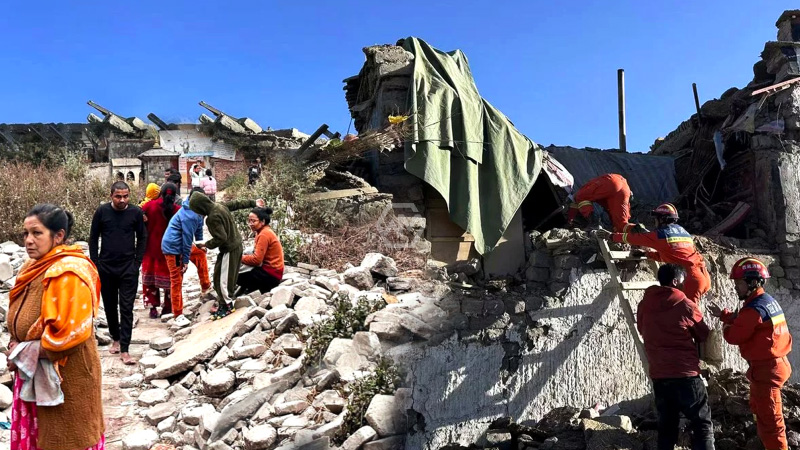- A magnitude 7.1 earthquake killed 53 people and injured 62 in Tibet.
- Over 1,500 rescue workers deployed amid 50 aftershocks.
- Severe structural damage reported near the epicenter, 75 km from Mount Everest.
A powerful earthquake of magnitude 7.1 struck Tibet on Tuesday, leaving 53 dead and 62 injured, according to China’s disaster relief headquarters. The epicenter, located 75 kilometers northeast of Mount Everest, caused widespread devastation in Shigatse and nearby communities, damaging over 1,000 homes.
The quake, felt across Nepal’s capital, Kathmandu, and surrounding areas, triggered 50 aftershocks within hours. While Nepal has reported no significant damages, the tremors highlight the seismic vulnerability of the Himalayan region, where tectonic activity frequently results in large-scale upheaval.
Tibet Earthquake: Tragedy in the High Himalayas
The earthquake, measured at a shallow depth of 10 kilometers, struck a region already vulnerable to seismic activity due to the collision of the India and Eurasia tectonic plates. This activity has historically reshaped the Himalayan landscape, causing tremors powerful enough to alter the heights of its peaks, including Mount Everest.
Rescue operations are underway in Shigatse and other affected areas, where emergency teams face challenges posed by harsh winter conditions and high altitudes averaging 4,200 meters. Video footage shows debris blocking roads and crushed cars in heavily affected villages. Local residents remain on edge as aftershocks continue to shake the region.
The impact extended across the border into Nepal, where many rushed out of their homes in panic. Kathmandu, approximately 230 kilometers from the epicenter, reported strong tremors but minimal damage. Officials in Nepal’s mountainous Solukhumbu district near Everest are conducting searches but have not yet reported casualties or structural damage.
The devastation highlights the precarious nature of life in this seismically active zone. With communities residing at extreme altitudes, infrastructure vulnerabilities become starkly evident in the face of natural disasters. Efforts to improve disaster preparedness and infrastructure resilience are critical for the region’s safety.
This tragic earthquake underscores the urgent need for robust disaster preparedness in seismically active regions, particularly in high-altitude, remote communities.
“Natural disasters remind us of the fragility of human life and the need to build resilience against forces beyond our control.”



